When dissolved rock ions come into contact with a resin bead, the rock ion is trapped and the sodium ion is released. The brine tank holds a salt solution that flushes the mineral tank, replacing calcium and magnesium ions with sodium.

How A Water Softener Works
Find out in this video!

How does a water softener work with salt. Using a water softening s. Water softener salt usage calculations The ion exchange process used by water softeners doesn’t work without the sodium ions displacing the calcium and magnesium ions that create water hardness.
Tiny beads of resin, armed with sodium ions (from the salt you add to your softener) target any unwanted ions in your water. The dissolved water known as brine is used by the water softener to regenerate the water softening resin inside the water softener tank. The truth is, water softeners do not add any salt to the water.
Reducing their effectiveness and lifespan. A water softener works by removing the magnesium and calcium present in your water supply through a process of ion exchange, turning it from hard water to softened water. To clear things up, salt, also known as sodium chloride (nacl), contains sodium (na).
As will the cost of diamond crystals costing more than nature’s own for the potassium chloride pellets in most locations as well. The sodium ion is exchanged for the dissolved rock ion. On the other hand, in conventional water softeners, salt removes minerals, including calcium and magnesium—which cause hard water—through a process called ionic.
Here’s how just one system can dramatically improve your water. You can rest easy knowing you’re. When calcium and magnesium have been crystallized, they are impeded from dissolving in the water and sticking to pipes, appliances, and certain surfaces.
The output of this typical 30 minute process is discarded through the drain hose. The variety that relies on magnets, which is. The salt can be sodium chloride or potassium chloride.
The system removes hardness through an ion exchange process. One softener tank contains the resin beads, while the other softener tank contains a salty brine solution. Sodium present in the water does not make it saltwater.
When sodium, also known as salt, interacts with these minerals the molecular makeup changes. A meter at the top of the mineral tank regulates recharging cycles. Brine tank, control valve, and mineral tank.
As additional hard water enters the mineral tank, the positively charged calcium and magnesium in the water are attracted to the plastic beads, replacing the sodium on the beads. How water softeners work if you have hard water, a water softener is the solution to spotty dishes, dry skin and limescale buildup in pipes and appliances. The brine solution flows through the resin tank, rinsing the beads and exchanging new sodium for the hard water minerals that have collected.
The high concentration of sodium ions in the salty water displaces the calcium and magnesium ions the resin, and the resin becomes once. A water softener salt (brine) tank works by storing salt that is dissolved by water that is put in by the water softener. Water softeners contain resin beads that remove hard water ions before they reach your sinks, showers and appliances.
The brine tank holds salt which is added manually. How does a water softener work? This is known as the water softener backwash cycle.
In the freshly regenerated mineral tank, the beads are now coated with sodium or potassium provided by the brine tank. How a water softener works. These resin beads need to be regularly recharged by salt water to keep your softener working its best.
A household of four people uses an average of 300 litres of water a day but the amount of salt you need also depends on the hardness of your water and your water softening system. Unlike hard water, softened water does not damage your home’s piping, or cause a build up of scale in your appliances; The water softening process breaks down the salt to use its sodium.
The water that you use every day can be hard on both you and your house. A more accurate way to describe them would be “descalers” since they do reduce buildup in many (but not all) types of plumbing equipment. Salt is a chemical compound while sodium is an element.
Water passing through the mineral tank loses positively charged calcium and magnesium ions to negatively charged plastic beads. The amount of salt present, is very low, unlike true saltwater. As a result, the hard minerals in the water stay in the tank, while soft water is pumped into your home.

How A Water Softener Works - H2o Distributors

How A Water Softener Works Monarch Water
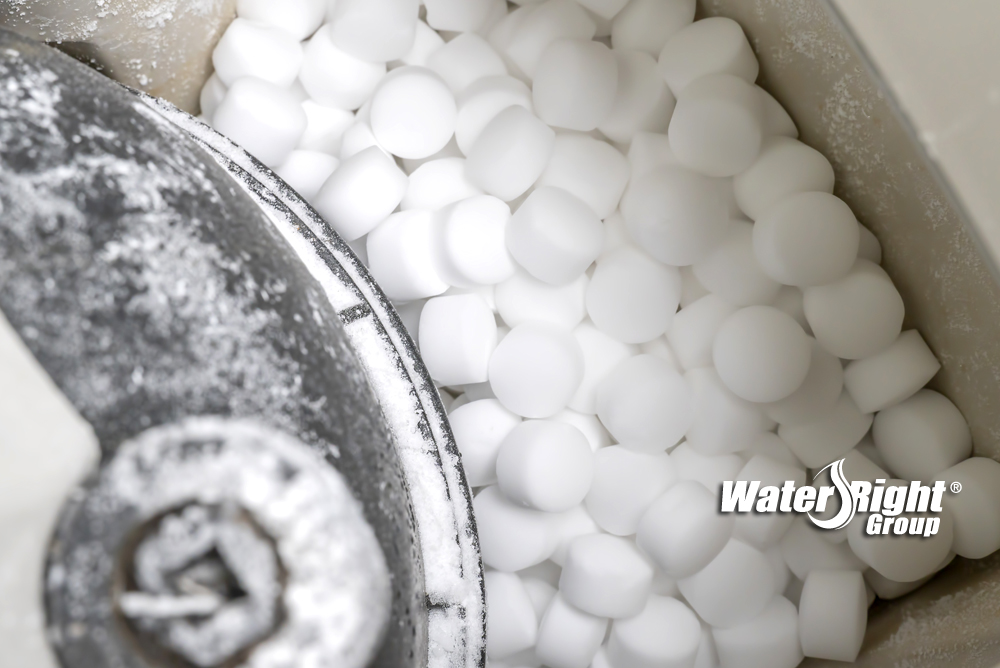
Why Does My Water Softener Need Salt Water-right

How A Water Softener Works - H2o Distributors

How Does A Water Softener Work Tlc Plumbing
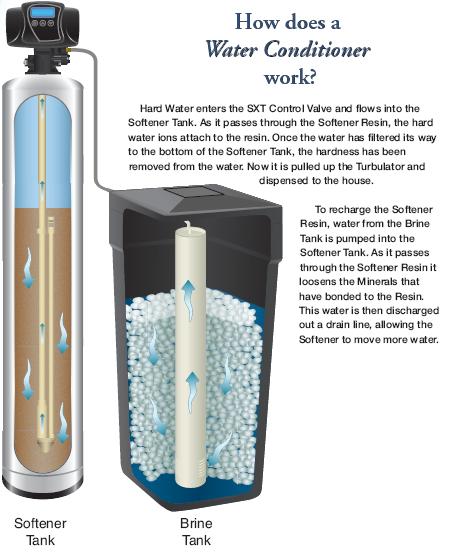
How Do Water Softeners Work - Sterling Quality Water

How Do Water Softeners Work
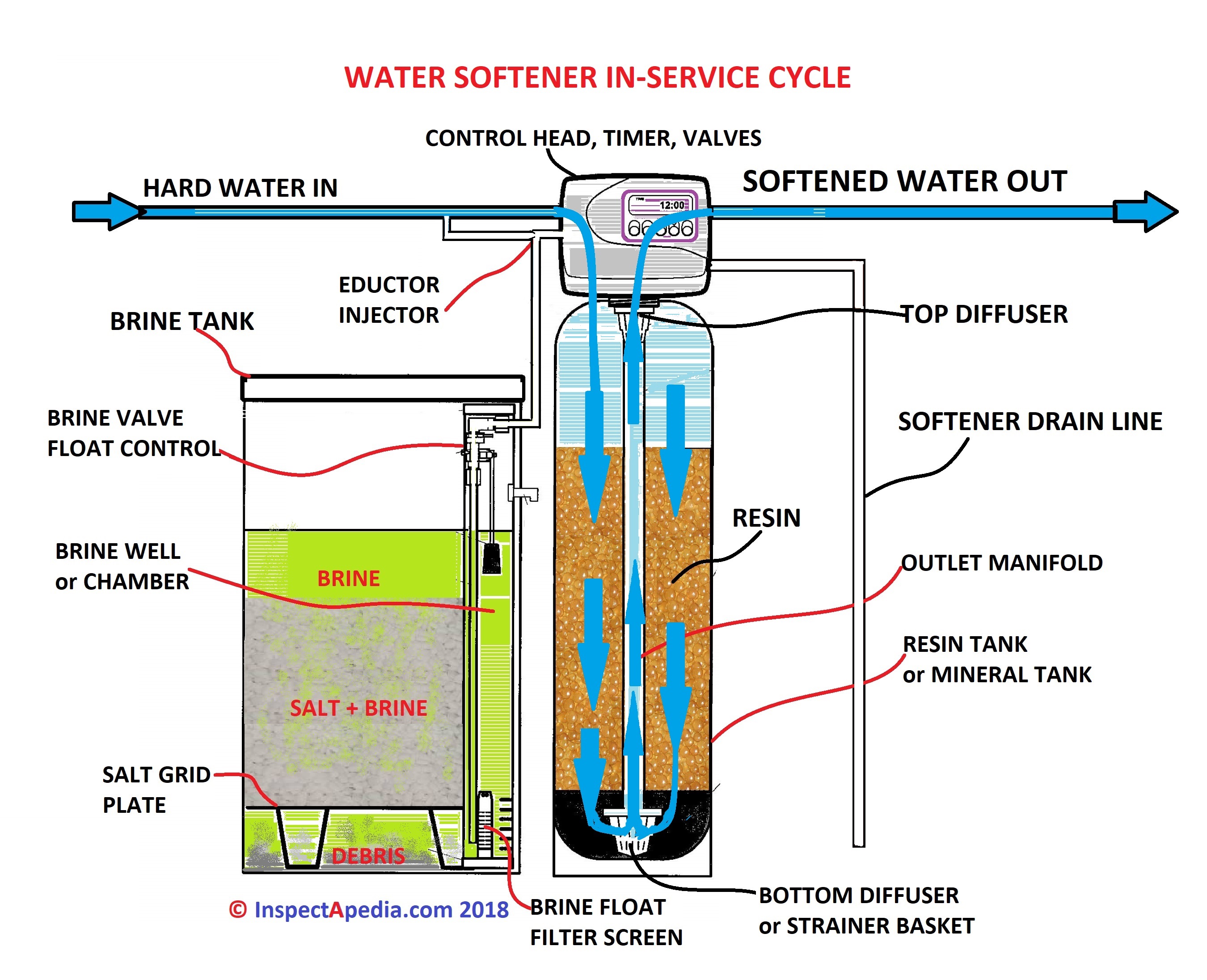
How Water Softeners Work - A Guide To Water Softener Operation Maintenance Adjustment
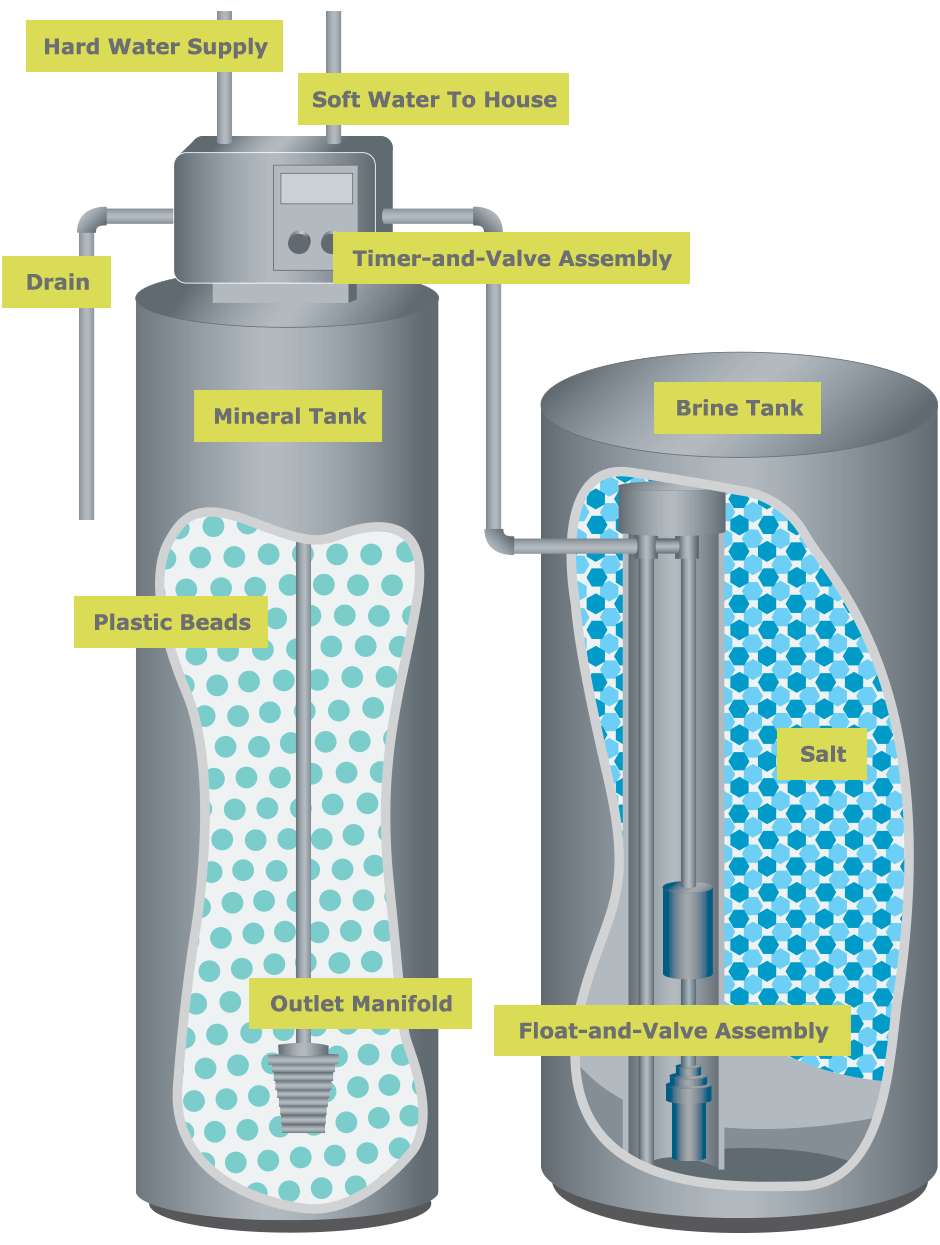
How Softeners Work Water Softener Facts
How Does A Water Softener Work And What Do They Do - Filtersmart
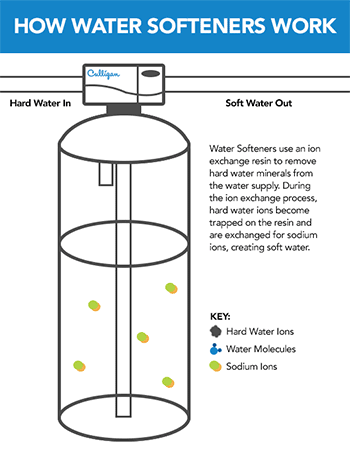
What Is A Water Softener - Culligan Water

Pin On Instapaper
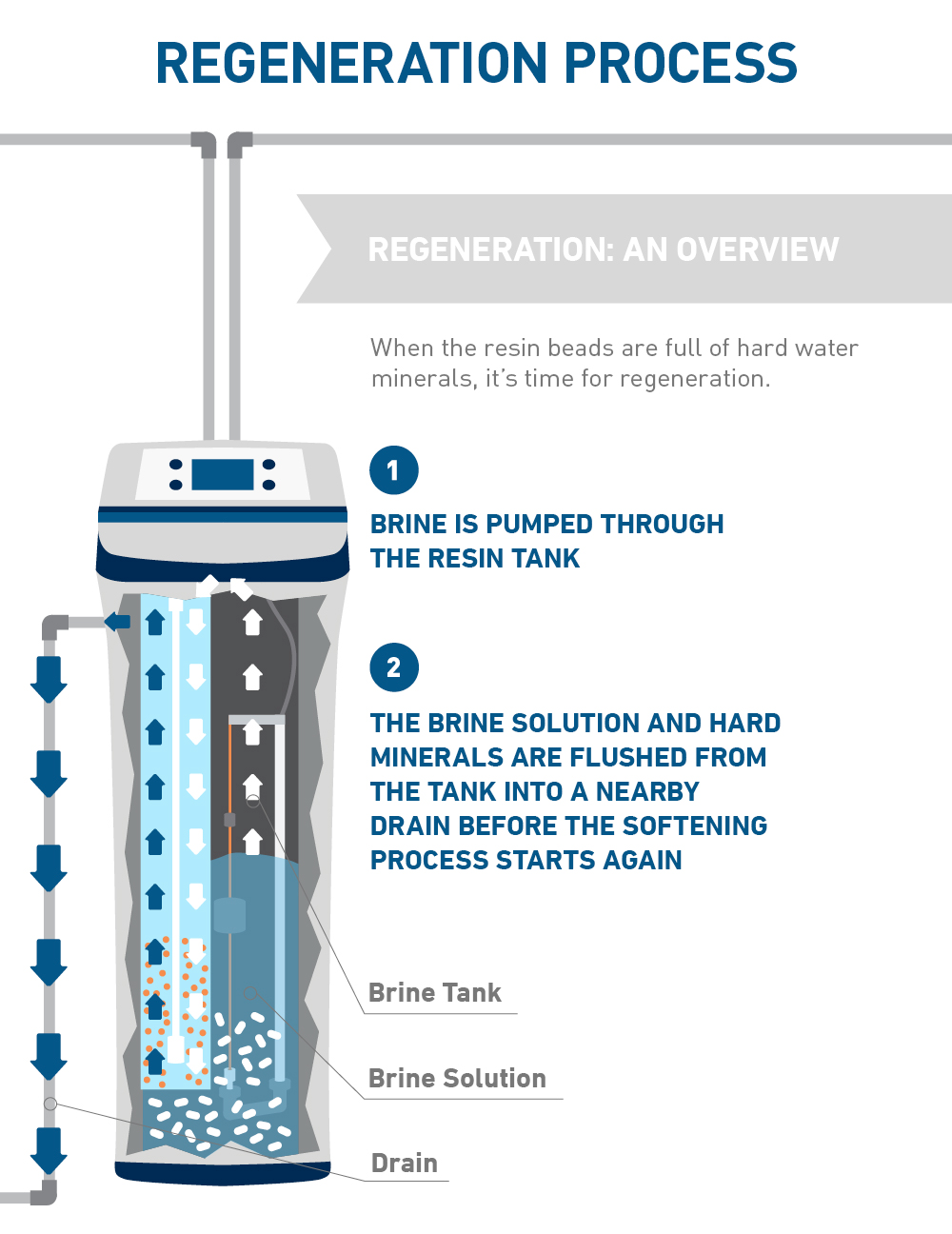
How Does A Water Softener Work Water Softening Process Diagram
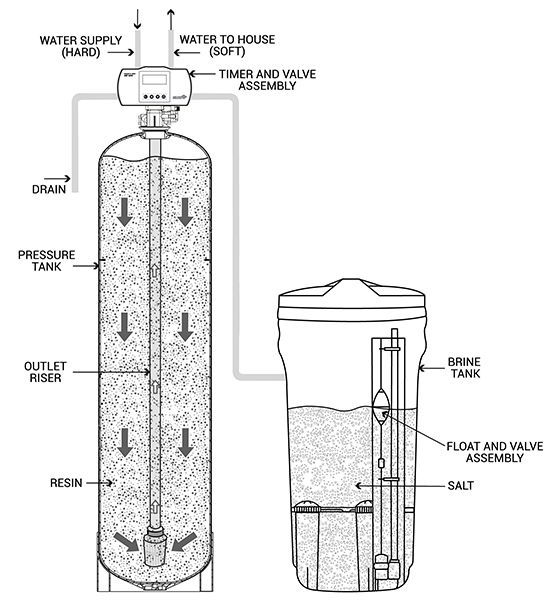
Water Softener - How Do They Work - Hydronix

How Does A Water Softener Work Diamond Crystal Salt
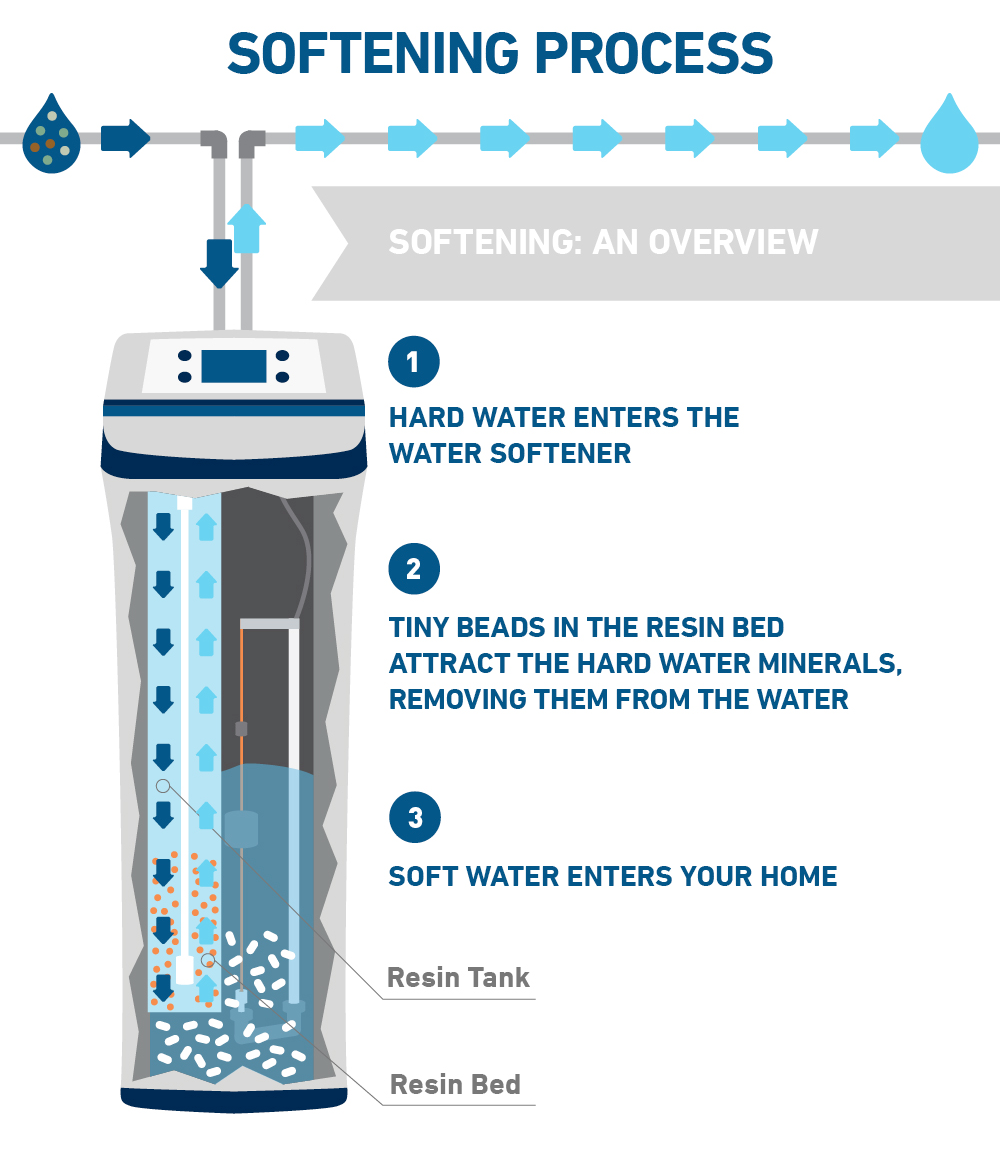
How Does A Water Softener Work Water Softening Process Diagram

Apa Yang Dimaksud Water Softener Dan Bagaimana Proses Kerjanya Waterpluspure

How Does A Water Softener Work - Salt-free Electronic Magnetic
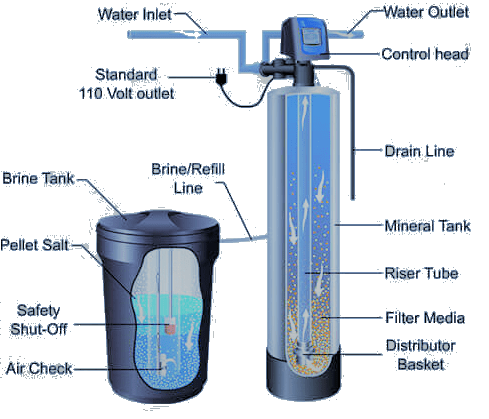
How Does A Water Softener Work Ion Xchange